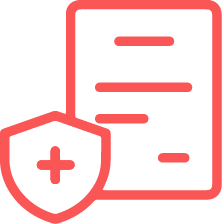This example underscores the high stakes involved in CSV. In complex drug production and regulatory environments, CSV testing isn’t just a regulatory checkbox—it’s your safety net. Effective CSV testing ensures systems are compliant, reliable, and meet both regulatory standards and business needs. While scripted testing provides structured, step-by-step validation to meet regulatory requirements, incorporating unscripted testing methods can offer quick, cost-effective feedback that catches issues scripted tests may miss.
Let’s explore why combining these testing methods is crucial for achieving a cost-effective and comprehensive CSV strategy.
Computer System Validation (CSV) is a rigorous process used to ensure that software systems are reliable, compliant with regulatory requirements, and meet the necessary quality standards. In industries like pharmaceuticals, where accuracy and compliance are critical, effective CSV helps prevent costly errors and maintains system integrity throughout the software lifecycle.
Testing during CSV is about more than just meeting regulatory requirements like FDA 21 CFR Part 11, EU Annex 11, and GxP guidelines; it’s about ensuring systems are reliable, accurate, secure, and compliant, safeguarding patient safety, product quality, and data integrity. CSV testing is not a one-time event but a continuous process that occurs in different phases, each with its specific objectives and checks:
1. Installation Verification (IV)
Also known as Installation Qualification (IQ), this phase checks if the software is installed correctly and configurations are in place. Proper installation is critical as it sets the foundation for the system’s functionality and ensures that all components are correctly integrated.
2. System Integration Testing (SIT)
Also known as Installation Qualification (IQ), this phase checks if the software is installed correctly and configurations are in place. Proper installation is critical as it sets the foundation for the system’s functionality and ensures that all components are correctly integrated.
3. User Acceptance Testing (UAT)
Also known as Performance Qualification (PQ), this phase ensures the system meets user expectations and needs. UAT is crucial for validating that the system performs as required in real-world scenarios and meets the end users’ operational needs.
Each of these phases benefits from both scripted and unscripted testing approaches. Scripted testing is essential for achieving the meticulous documentation needed for regulatory compliance, while unscripted testing provides valuable user-centric feedback that can enhance system usability and satisfaction.
The Role of Scripted and Unscripted Testing in CSV
Both scripted and unscripted CSV testing are crucial for comprehensive validation:
Scripted Testing
- Purpose: Provides a structured, step-by-step approach to validate that the system meets all specified requirements and quality criteria.
- Approach: Follows predefined test plans, scripts, and procedures to ensure objectivity, repeatability, and thoroughness.
- Documentation: Requires comprehensive documentation of test cases, test results, and traceability to requirements for regulatory compliance.
- Methodologies: Includes unit testing, integration testing, system testing, user acceptance testing, and regression testing.
- Coverage: Aims to achieve high coverage of functional and non-functional requirements.
Unscripted Testing
- Purpose: Allows for more flexibility and creativity, uncovering defects, usability issues, and potential improvements.
- Approach: Includes methods like error guessing, exploratory testing, and “Day in the Life” testing.
- Documentation: May involve minimal documentation, emphasizing quick feedback and rapid iteration over comprehensive reporting.
- Methodologies: Includes exploratory testing, ad-hoc testing, usability testing, and user acceptance testing.
- Coverage: May not achieve the same level of coverage as formal testing but provides valuable insights into areas that formal methods might overlook.
Integrating Scripted and Unscripted Testing
Combining scripted and unscripted testing methods can be highly effective when integrated into a cohesive testing strategy. Here’s how these approaches can be practically applied in a CSV workflow:
- Initial Validation with Scripted Testing: Start with scripted tests to ensure all regulatory and functional requirements are met. This phase provides detailed documentation and establishes a baseline for system performance.
- Exploratory Testing for Depth: Follow up with unscripted tests to explore the system’s functionality in real-world scenarios. This can uncover usability issues and potential improvements that scripted tests may not reveal.
- Iterative Feedback Loop: Use the insights gained from unscripted testing to refine and adjust scripted tests. This iterative process helps address issues early and improves the overall quality and usability of the system.
Types of Testing in CSV
Different types of testing are applied throughout the CSV process, each focusing on specific aspects of the system. Here’s a breakdown of the key testing types and their phases:
|
Type
|
Description
|
Phase in Which It’s Typically Done
|
|---|---|---|
|
Installation/Configuration Testing
|
Ensures software installation is spot-on and configurations match specifications.
|
Installation Qualification (IQ)
|
|
User Requirements Testing
|
Checks that the system meets user needs and expectations.
|
Performance Qualification (PQ), User Acceptance Testing (UAT)
|
|
Functional Testing
|
Validates core functions to make sure they’re working correctly.
|
Operational Qualification (OQ), System Integration Testing (SIT)
|
|
Performance Testing
|
Tests how the system performs under different conditions.
|
Performance Qualification (PQ), User Acceptance Testing (UAT)
|
|
Security Testing
|
Evaluates security measures to prevent unauthorized access and breaches.
|
Operational Qualification (OQ), System Integration Testing (SIT)
|
|
Compliance Testing
|
Ensures the system complies with regulatory requirements and standards.
|
Operational Qualification (OQ), System Integration Testing (SIT)
|
|
Regression Testing
|
Makes sure updates or changes don’t mess up existing functionalities.
|
Performance Qualification (PQ), User Acceptance Testing (UAT)
|
Table 1. Types of Testing in CSV and Their Phases
Understanding these different types of testing is crucial for appreciating how scripted and unscripted approaches contribute to the CSV process. Each type of testing addresses specific aspects of system validation and is aligned with different CSV phases.
By combining both scripted and unscripted testing methods, you can ensure that all bases are covered—from meeting regulatory requirements to optimizing user experience.
Comparison of Scripted and Unscripted Testing Approaches
Scripted testing and unscripted testing each serve distinct purposes in Computer System Validation (CSV). Here’s a detailed comparison:
|
Aspect
|
Scripted
|
Unscripted
|
|---|---|---|
|
Purpose
|
Systematically verify and validate that the software or system meets specified requirements, standards, and quality criteria.
|
Explore the software or system in a less structured manner to discover defects, usability issues, and potential improvements.
|
|
Approach
|
Follows predefined test plans, scripts, and procedures.
|
Relies on the tester’s intuition, experience, and creativity.
|
|
Documentation
|
Requires comprehensive documentation for regulatory compliance.
|
May involve minimal documentation, focusing on quick feedback.
|
|
Methodologies
|
Includes unit, integration, system, user acceptance, and regression testing.
|
Includes exploratory testing, ad-hoc testing, and usability testing.
|
|
Coverage
|
Aims for high coverage of functional and non-functional requirements.
|
May not achieve the same coverage but provides insights into overlooked areas.
|
Table 2. Comparison between Scripted and Unscripted Testing Approaches in CSV
Why Combine Scripted and Unscripted Testing?
Combining scripted and unscripted testing methods offers a balanced and comprehensive approach to CSV. Here’s why:
- Enhanced Coverage: Scripted testing ensures all regulatory requirements and functionalities are covered, while unscripted testing explores potential edge cases and usability scenarios that may not be captured by formal methods.
- Early Defect Detection: Unscripted testing enables early detection of defects that rigid scripted tests might miss, saving time and reducing costly rework. This is particularly important in a risk-based validation approach, where testing focuses on high-risk areas.
- Thorough Documentation and Compliance: Scripted tests provide the necessary documentation for compliance audits, ensuring all bases are covered for regulatory approval. This is essential to meet standards like FDA 21 CFR Part 11, EU Annex 11, and GxP guidelines.
- Adaptive Testing Strategy: Organizations can focus on scripted tests for high-risk areas and unscripted tests for exploratory scenarios, adapting their strategy based on the system’s complexity, risk profile, and project needs.
CSV testing isn’t just a one-and-done deal. It’s an ongoing process of continuous improvement. The feedback loop from testing helps:
- Identify areas to enhance
- Optimize processes
- Maintain overall system quality and compliance
A risk-based validation approach in CSV is key to continuous improvement. It focuses testing efforts on high-risk areas, critical functionalities, and evolving regulatory requirements, ensuring that systems remain reliable, validated, and aligned with changing business needs.
Key Roles and Responsibilities in Effective CSV Testing
A successful CSV effort requires collaboration among various roles, including quality assurance professionals, validation specialists, subject matter experts, system admins, and end-users.
Each role is vital in planning, executing, and documenting both scripted and unscripted tests, ensuring systems remain validated, secure, and compliant.
This all-hands-on-deck approach facilitates continuous improvement and keeps the feedback loop active, refining both testing methods.
Unscripted vs. Scripted: A Dynamic Duo in CSV Testing
So, when it comes to CSV testing, there are two types to juggle: scripted and unscripted. The difference lies in how they’re executed and documented. Here’s a quick look at how they stack up:
|
Testing Type
|
Assurance Approach
|
Test Plan
|
Test Results
|
|---|---|---|---|
|
Unscripted Testing
|
Ad-hoc (with least-burdensome documentation)
|
Testing of requirements or functions with no test plan
|
Details regarding any failures / deviations found
|
|
Unscripted Testing
|
Error guessing
|
Testing of requirements or function failure modes with an optional listing of expected failure modes in advance
|
Details regarding any failures / deviations found
|
|
Unscripted Testing
|
Exploratory Testing
|
Establish high-level test plan objectives for requirements or functions (no step-by-step procedure is necessary)
|
Pass/fail for each test plan objective.
Details regarding any failures/deviations found. |
|
Unscripted Testing
|
Day in the Life Testing
|
Establish high-level test plan objectives for normal day-to-day activities to be challenged (no step-by-step procedure is necessary)
Test using business process experience and knowledge, and against SOPs where available. |
Pass/fail for each test plan objective.
Details regarding any failures/deviations found. |
|
Scripted Testing
|
Scripted Testing: Limited
|
Limited test cases (step-by-step procedure) identified.
Expected results and values. Independent review and approval of test plan |
Pass/fail for test case identified.
Details regarding any failures/deviations found and disposition regarding fails |
|
Scripted Testing
|
Scripted Testing: Robust
|
Test objectives.
Test cases (step-by-step procedure). Expected results and values. Independent review and approval of test cases. |
Pass/fail for test case identified.
Details regarding any failures/deviations found and disposition regarding fails |
Table 3. Detailed Comparison of Scripted and Unscripted Testing Approaches
Why Unscripted Testing is Your Secret Weapon
Unscripted testing isn’t just a nice-to-have; it’s a game-changer in CSV. Here’s why:
- Early Defect Detection: Helps catch issues early, saving time and resources.
- User-Centric Feedback: Involves real users to ensure the software meets their needs.
- Exploratory Testing: Encourages testers to think outside the box, often finding issues missed by formal testing.
- Flexibility and Adaptability: Easily adjusts to changing project needs or requirements.
- Cost-Effectiveness: Less overhead and faster feedback mean lower costs.
- Collaborative Culture: Fosters a team environment where knowledge is shared freely.
- Quick Feedback Loops: Speeds up the development process and boosts team agility.
- Risk Mitigation: Identifies potential issues early, reducing the chance of costly delays or rework.
Effective Computer System Validation (CSV) relies on a balanced approach that integrates both scripted and unscripted testing methods. Scripted testing ensures comprehensive documentation and regulatory compliance, while unscripted testing provides flexibility, early defect detection, and valuable user feedback.
By combining these approaches, you cover all aspects of validation—from compliance and functionality to usability and user satisfaction. This balanced strategy not only meets regulatory requirements but also enhances system reliability and user experience. To implement a robust CSV strategy, leveraging both scripted and unscripted testing methods is essential.
For expert guidance on integrating these methods into your CSV process, contact QbD Group today. Our solutions are designed to support your organization’s compliance, quality, and operational goals.











.jpg)











.jpg)







